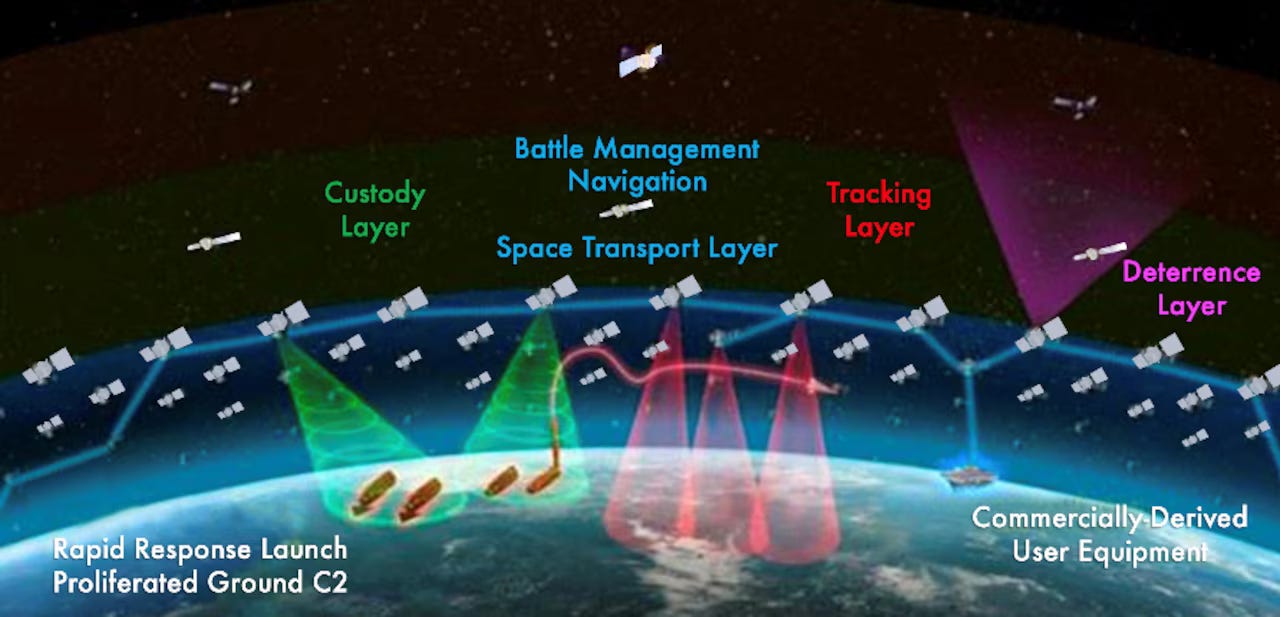“Well, obviously I start worrying principally about seed corn of where long-term innovation and disruption is gonna come from. And so it's disturbing to me when I look and see that really, really novel things like space solar power, SSPIDR looks like it's getting as much as a $15 million cut; Rocket Cargo losing between $12 to $25 million, which is like a third to a half of its tiny budget." -Peter Garretson
Hello Readers and Listeners,
This is the last week of Summer, days before the U.S. Senate and the House of Representatives return to Washington, D.C. to lock horns over federal budget provisions large and small for the government’s 2024 financial year. In this calm before the storm, it’s time to take a look at just what in space and defense legislators agree on, and what will trigger them to start butting heads like bighorn rams.
I want to keep this opening note simple because this episode’s discussion not only delivers numbers, my guests serve up the context and nuance that is often lost in budgetary discussions that focus on the headline-grabbing top-line number. And remember, the budget decisions made thus far are subject to negotiation, and are therefore not final.
The above is an explainer video for the Air Force Research Laboratory’s SSPIDR | Space Solar Power Incremental Demonstrations and Research Project. Video: Bradley Bowman/AFRL
For reference, here are a few numbers and points worth bearing in mind:
Don’t get duped by folks saying the Space Force budget doubled, tripled, or whatnot since it’s first real budget for FY ‘21. The final top-line numbers for those years were driven almost entirely by the fact that the newest service branch assumed responsibility for most of the Department of Defense’s space-related assets and the transfer of thousands of space personnel from the other service branches. Very little of that was “new” growth.
The Space Force also does not *yet* have its own congressional liaisons, public affairs shop, recruitment officers, Judge Advocate General Corps, or personnel center, which would include everything from managing promotion boards to civilian programs and family care.
Both the Senate and House Appropriations Committees have a DoD top-line number of roughly $886b. Because of differences in the news-media reports on top-line dollar amounts, I got my numbers from the Senate Appropriations Committee's "Report" and the House Armed Services Committee’s summary.
While there may seem to be little difference between the Senate’s $31.31b and the House’s $31.26b top-lines for all things DoD space, both are more than a billion less than what the Biden Administration proposed. A billion would go a long way in such small budgets.
With the above in mind, now consider that the Biden Administration’s FY ‘24 Defense Budget Request is $842 billion. In simple math that means the Senate and House are delivering a $44b plus-up for all the warfighting domains except space - in fact, just the opposite.
And value, actual buying power, must be adjusted for inflation, which was 5% year-over-year in March, when the Presidential Budget Request was submitted to Congress. The year-over-year rate for July, the latest available from the US Inflation Calculator website, was 3.2%.
No one is under any illusion that the Senate and House will reach an agreement before September 30, the end of the current fiscal year. The Senate and House leadership have already agreed to push through a continuing resolution to keep the government open, possibly up to the Christmas recess. The question Space power advocates have is whether the final budget will bring much needed gifts.
Who’s on this week’s episode



Chris Stone - Senior Fellow for Space Deterrence, National Institute for Deterrence Studies and author of the book “Reversing the Tao: A Framework for Credible Space Deterrence”
Peter Garretson - Senior Fellow, American Foreign Policy Council, and co-author of the book “The Next Space Race: A Blueprint for American Primacy”
Sam Wilson - Senior Policy Analyst, Center for Space Policy and Strategy at The Aerospace Corporation.
The above is an explainer video for the Air Force Research Laboratory’s Rocket Cargo program. Turn the volume down a bit as it’s heavy on the bass. Video: Bradley Bowman/AFRL
If you really want to nerd out on the budget
“The Space Force needs to get bigger” is a David Ignatius opinion piece Published by the Washington Post. It may be behind a paywall.
“What is a government shutdown? And why are we likely to have another one?” by David Wessel, Senior Fellow in Economic Studies at Brookings and Director of the Hutchins Center on Fiscal and Monetary Policy.
The Velos Velos “FY 2024 Budget Tracker” is focussed on military space and is granular.
Ad Astra,
Laura













